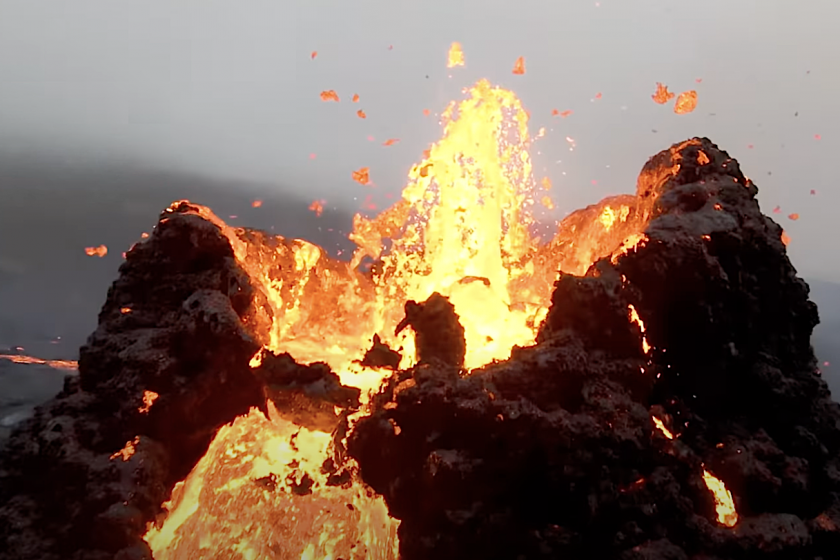AccuWeather
Drone offers stunning panoramic view of the erupting volcano
After weeks of anticipation, the long-dormant Fagradalsfjall volcano in Iceland began to erupt on Friday night and continued to expel lava over the weekend and earlier in the week. This is the first time in 6,000 years that the volcano has erupted, but nearby volcanoes on the Reykjanes Peninsula erupted 781 years ago, the Associated Press reported. The volcano is erupting in the area that recently experienced a swarm of more than 22,000 earthquakes near the end of February and the beginning of March. Officials in Iceland have warned that the swarm was the prelude to a volcanic eruption. CLICK HERE TO GET THE FREE ACUWEATHER APPLICATION The Fagradalsfjall volcano is located in southwest Iceland and is about 20 miles from the capital Reykjavik. One of the nearest towns is Grindavik, which is 9.6 km away. Iceland’s Emergency Management Department said it was not anticipating evacuations because the volcano is in a remote valley, about 2.5 kilometers from the nearest road, the AP reported. The eruption has so far been confined to a small area, with the Icelandic Meteorological Office tweeting on Saturday that the eruptive fissure was approximately 1,640-2,300 feet (500-700 meters) long with lava covering less than 0.38 square miles (1 square kilometer) . Although the site of the eruption was originally blocked from the public, on Saturday, people were allowed to take the hike to see the eruption, according to BBC News. And large crowds showed up to witness the spectacle over the weekend – and, incidentally, smell the magma’s unique scent. “It smells really bad,” admitted Úlvar Kári Jóhannsson, 21, in an interview with AFP. “What was surprising to me was the colors of orange – much deeper than you expected,” he said. “It is absolutely breathtaking.” Meanwhile, a drone flying over the volcano captured sensational images of molten rock splashing out of Fagradalsfjall’s mouth as it was forced to rise from the depths of the Earth. On Monday, however, the increase in gas emissions once again closed the site. There were very few ash emissions associated with the eruption, which kept the impacts very localized. If there is a more significant eruption with an ash cloud, light winds until Wednesday should keep any possible ash close to the eruption site. On Thursday, the wind may change from the southeast, potentially blowing towards Reykjavik. Although gas emissions at the site have occasionally been at dangerous levels, it is unlikely that the gas will reach Reykjavik at dangerous levels. For those who are trying to take the hike to see the eruption, several episodes of rain and snow are expected during the rest of the week, but the rainfall should not be heavy. Keep visiting AccuWeather.com and stay connected to the AccuWeather Network on DirecTV, Frontier, Spectrum, FuboTV, Philo and Verizon Fios.
